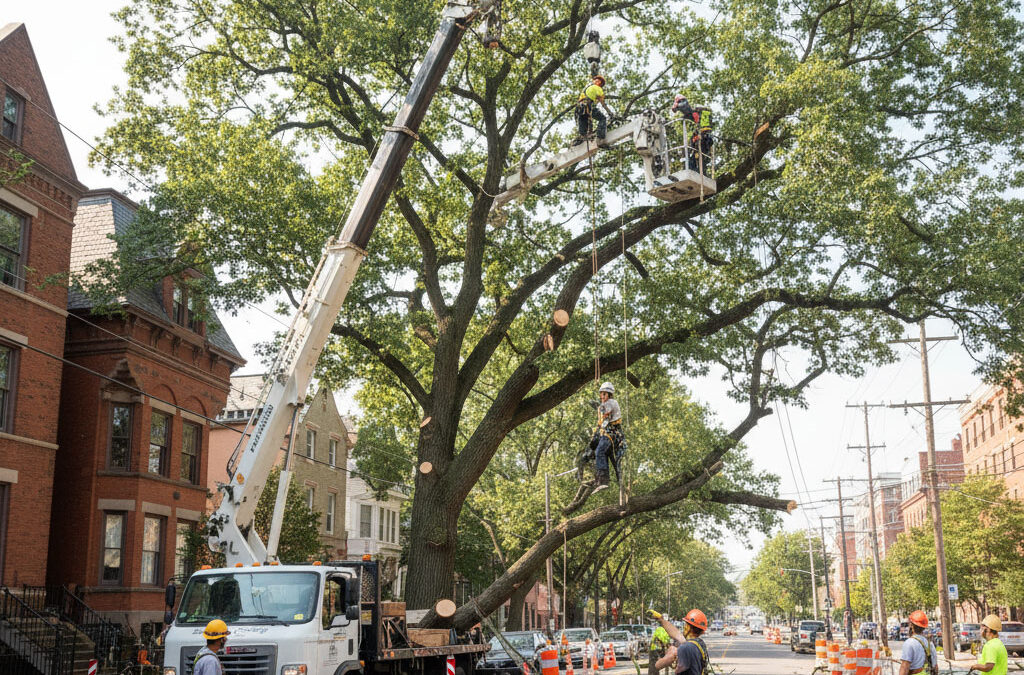Tree removal may seem like a straightforward process, but it involves significant risks that require expert planning. Improper removal can result in property damage, injury, or environmental hazards.
Professional tree service companies approach every removal project strategically to protect people, structures, and the tree’s surrounding environment.
Careful planning is essential because each tree is unique. Factors such as size, location, species, health, and nearby obstacles influence the removal strategy.
By evaluating these elements ahead of time, professionals can execute the job safely and efficiently while minimizing potential problems.
Risk Assessment and Site Evaluation
Before any tree is removed, a comprehensive assessment is conducted to identify hazards and plan the safest approach.
- Inspect the tree’s health, stability, and leaning direction.
- Identify nearby structures, vehicles, power lines, and landscaping features.
- Assess soil conditions and surrounding terrain for safe equipment placement.
A detailed evaluation allows the team to anticipate challenges and develop a step-by-step removal plan. This reduces the risk of accidents and ensures the process proceeds smoothly.
Use of Proper Equipment
Tree removal requires specialised tools and machinery to handle large trees safely.
- Chainsaws, pole saws, and aerial lifts enable precise cutting.
- Cranes or rigging systems may be used for large or unstable trees.
- Safety gear such as helmets, gloves, and protective clothing is essential.
The correct equipment ensures each cut is controlled and reduces the chance of falling branches or uncontrolled tree movement. Professionals match the tools to the tree’s size and location for maximum safety.
Sectional Removal Techniques
Many trees cannot be removed in a single piece. Experts often dismantle trees in sections to manage risk.
- Remove branches from the top down, guiding them safely to the ground.
- Cut the trunk in manageable segments to control weight and direction of fall.
- Plan escape routes and positioning for workers in case of unexpected shifts.
Breaking down the tree prevents uncontrolled falls and property damage. Sectional removal also allows professionals to navigate tight spaces and challenging locations safely.
Environmental and Property Considerations
Tree removal can affect surrounding structures, landscaping, and ecosystems.
- Protect nearby plants, lawns, and hardscapes from accidental damage.
- Minimize impact on wildlife habitats whenever possible.
- Consider drainage, soil integrity, and tree roots that may affect surrounding areas.
Careful planning ensures that the removal process does not create unnecessary disruption or long-term problems. Professionals balance safety with preserving the surrounding environment.
Compliance and Safety Regulations
Tree removal must adhere to local regulations and safety standards.
- Follow municipal codes regarding permits, tree size, and protected species.
- Abide by OSHA and industry safety guidelines to protect workers and property.
- Maintain proper communication and warning signs if removal is near public areas.
Complying with regulations avoids legal issues and ensures a safe working environment. Planning in advance helps prevent fines, accidents, and delays during the project.
Strategic Planning Protects People and Property
Tree removal is a complex process that requires careful planning to ensure safety, efficiency, and minimal impact. By assessing risks, using proper equipment, applying sectional techniques, considering environmental factors, and complying with safety regulations, professionals execute removals with precision.
Careful planning safeguards homeowners, workers, and property while ensuring the tree is removed responsibly. With expert strategy, tree removal can be completed safely and effectively, protecting both your landscape and your investment.

